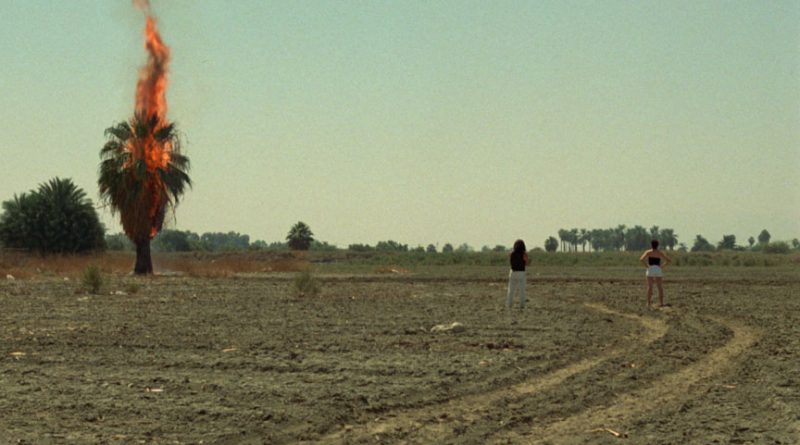
It’s not easy living in a transactional world without losing hope. That seems to be one of the many truths that become evident to viewers of the 1991 film Queen of Diamonds. Newly restored by The Academy Film Archive and The Film Foundation, the film is written, produced, directed, and shot by feminist auteur Nina Menkes. She has been in the spotlight most recently for her documentary Brainwashed: Sex, Camera, Power, premiered at this year’s Sundance Film Festival. Brainwashed examines the gendered and often misogynistic visual grammar of cinema using over 170 movie clips from the history of film. Traveling back to an earlier work by Menkes offers a fascinating look at how a female filmmaker can reframe or manipulate what has, over time, become the traditional visual language of film, in the service of more femme-centric storytelling.
Shot on location in Las Vegas, Queen of Diamonds centers on jaded blackjack dealer Firdaus (Nina Menkes’ sister, frequent collaborator and thespian muse Tinka Menkes) who sleepwalks through the banality of her days and nights in desolate urban and natural landscapes of faded glory. With no plot to speak of, Queen of Diamonds is a presentation of one woman’s bleak, joyless experience. Menkes uses ambient sound, sparse dialogue and long takes as she follows Firdaus in real time through each scene. All of this highlights the character’s alienation and repressed rage. More though, Menkes often keeps both Firdaus and all the other characters with which she interacts in static shots, occasionally cutting to show some segmented aspect of Firdaus, like her 4 inch, blood-red painted nails, shown against the blue florescence of nighttime or the stark overexposed sun-burnt Vegas daylight. We never learn much about her, other than she (mostly) doesn’t take any shit. She chooses to be caretaker of an sick elderly man living in the same low-rent apartment complex. Her husband has been missing for months, but she does little to find him. No more information about him or his absence is offered. At her job as blackjack dealer, she works by rote like a raven-haired robot, which we learn as observers seeing her from a distance, watching her going through the motions. In a 17-minute scene at the casino, Menkes uses ambient sounds that capture the capitalism, desperation and greed marking all gambling establishments.
To read the review in its entirety, go to AWFJ.org HERE.



